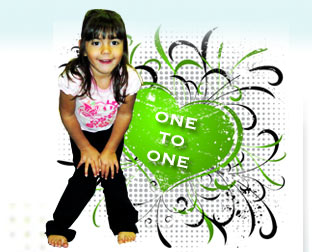Thursday, April 24, 2025 |
 |
Therapeutic Listening
Therapeutic Listening™
Therapeutic Listening™ is a sensory integration auditory modality that uses electronically altered sounds to impact the nervous system. It is a developed protocol incorporating the use of compact discs for use at home, school, and clinical settings. Therapeutic Listening™ is used in conjunction with other sensory integration approaches to provide information for the organization of movement, learning, and behavior.
Listening
Listening is a function of the entire brain; when we listen, we listen with the whole body. Listening is the process of detecting sound and organizing and integrating it for use with information from other senses. “Listening is the key in all our overall ability to orient to the people, places, and things in everyday life” (Frick, 2006). Listening difficulties such as the inability to accurately perceive, process, and respond to sounds are often a part of other sensory, motor, attention, and learning difficulties affecting a large number of children and adults.
Hearing Versus Listening
Hearing
- Passive
- Involuntary
- Audiogram
- Never Shuts Off
Listening
- Active
- Voluntary
- Requires one’s attention
- Connects inner and outer worlds
- Precursor to Interaction
- Affects Perception
- A Sensorimotor Activity
How Therapeutic Listening™ Works
The music used as part of the Therapeutic Listening™ protocol is specifically passed through a filter to allow certain high frequencies to be accentuated and low frequencies to be muted. By using the vestibular-cochlear mechanism in the inner ear, the brain becomes trained to filter out low frequencies of sounds and tune in higher frequencies, such as the human voice.
Benefits of Therapeutic Listening™
Modulation/Self-Regulation
- Improvement in sleep/wake cycles
- Reduction of sensory defensive behaviors
- A smoothing out of mood variance and arousal state
- Improvement in toilet training, especially over the age of 5-years-old
- Increased regularity of hunger and thirst cycles
- Improved focus and attention
Postural Tone/Postural Attention
- Establishment of body midline
- Ability to sustain active posture on stable and dynamic surfaces
- Improved co-contraction around shoulders and hips
- Active use of rotation in movement patterns
Motor Control
- Use of bilateral motor patterns
- Emergence of praxis
- Improved articulation
- Improved fine motor skill
Spatial-Temporal Organization
- Improved timing of motor execution
- Improved timing of social interactions
- Discrimination of dimensionality and directionality of spatial concepts
- Improved ability to maneuver through space
- Improved handwriting and visual-motor skills
Communication
- Greater range of non-verbal communication
- Non-verbal communication matches communicative intent
- Greater emotional expressiveness
Frick S. (2000). Listening with the Whole Body




